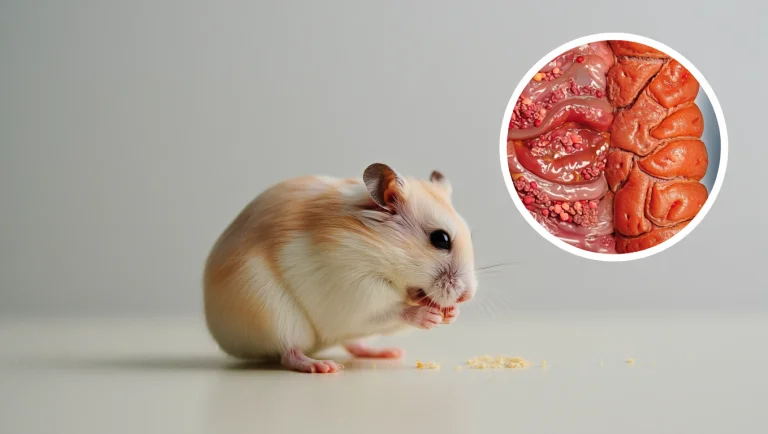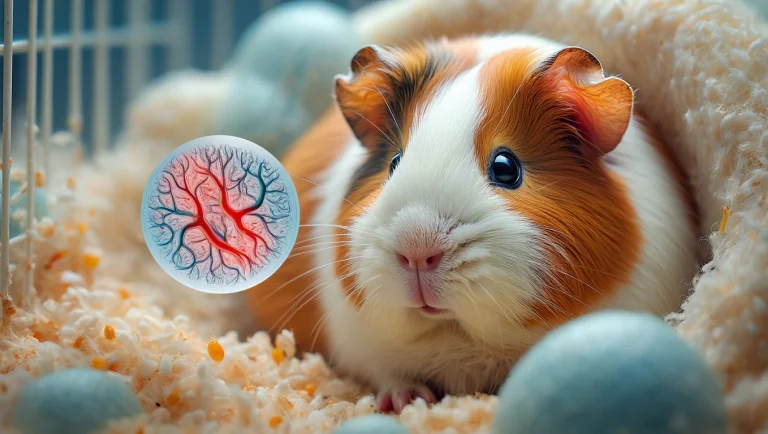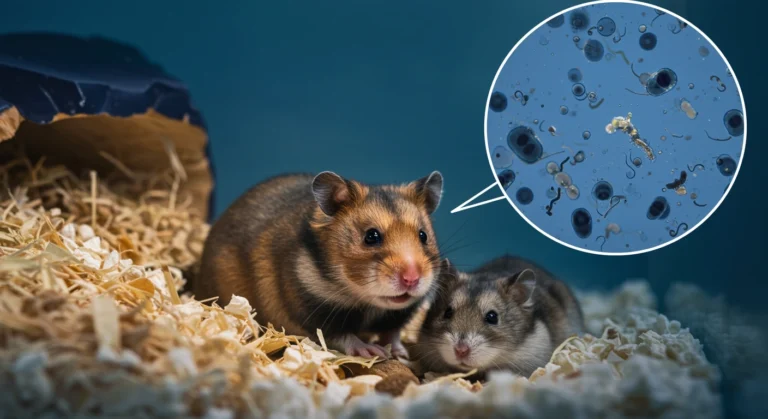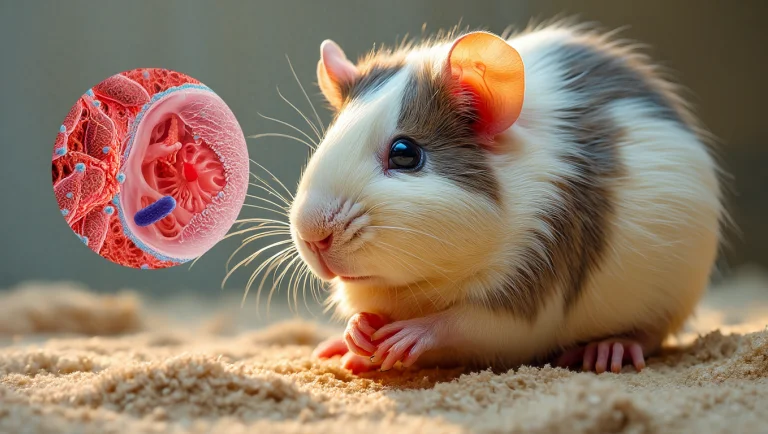Protect your pets from rodent poisoning with our comprehensive guide to common household toxins, warning signs, and pet-safe alternatives for effective pest control.

Table of Contents
Every year, thousands of beloved pets suffer from accidental poisoning, with rodenticides ranking among the most common culprits. As pet owners strive to eliminate unwanted rodent problems from their homes, they often unknowingly expose their dogs and cats to potentially fatal substances. Rodent poisoning occurs when pets directly consume rodenticides or when they hunt and eat poisoned rodents, creating a dangerous secondary poisoning scenario. With the prevalence of these toxins in many households, understanding the risks and prevention strategies has become essential knowledge for any responsible pet owner.
This comprehensive guide explores the five most common household rodenticides, their specific dangers to pets, warning signs of poisoning, immediate actions to take in case of exposure, and most importantly, how to effectively manage rodent problems while keeping your furry family members safe. Whether you’re a new pet parent or a seasoned owner, this information could make the difference between a safe home environment and a preventable tragedy.

Understanding Rodenticides and Their Danger to Pets
What Are Rodenticides?
Rodenticides are chemical substances specifically designed to kill rodents such as mice, rats, squirrels, and other similar pests. These products come in various forms including blocks, pellets, powders, and grain-based baits, all formulated to be highly appealing to rodents but extremely dangerous to all mammals, including our pets.
The concerning reality is that most rodenticides are created to be palatable—they often contain sweet-tasting ingredients to entice rodents to consume them. This same appealing taste makes them dangerously attractive to dogs and cats as well. According to the ASPCA Animal Poison Control Center, rodenticide exposure consistently ranks in the top ten pet toxicity cases reported annually, with over 9,700 cases reported in 2023 alone.
Why Pets Are Particularly Vulnerable
Pets face two primary routes of rodenticide exposure:
- Primary poisoning: Direct consumption of the rodenticide product
- Secondary poisoning: Consuming a rodent that has ingested the poison (especially common in cats and hunting dog breeds)
Several factors make pets particularly susceptible to rodenticide poisoning:
- Curiosity: Dogs and cats naturally investigate new objects in their environment
- Scavenging behavior: Many dogs will consume anything that smells remotely appetizing
- Hunting instincts: Cats and some dog breeds actively hunt and consume rodents
- Accessibility: Rodent baits are often placed in areas pets can easily access
- Delayed symptoms: Many rodenticides cause symptoms that develop slowly, making it difficult to connect the poisoning with exposure
The severity of rodenticide poisoning cannot be overstated—depending on the specific toxin and amount consumed, it can lead to internal bleeding, kidney failure, seizures, and death within days or even hours of ingestion.
The 5 Most Common Household Rodenticides
1. Anticoagulant Rodenticides
Mechanism of Action: Anticoagulant rodenticides prevent blood from clotting by interfering with vitamin K recycling in the body. This leads to uncontrolled bleeding and eventual death.
Common Active Ingredients:
- First-generation anticoagulants: Warfarin, chlorophacinone
- Second-generation anticoagulants: Brodifacoum, bromadiolone, difethialone, difenacoum
Danger to Pets: These are particularly dangerous as they have a cumulative effect, meaning small amounts consumed over time can eventually reach toxic levels. Second-generation anticoagulants are especially potent, requiring only a single feeding to be lethal. These toxins can remain in a pet’s system for weeks to months.
Signs of Poisoning: Symptoms typically don’t appear until 3-5 days after ingestion when blood clotting factors are depleted:
- Lethargy and weakness
- Pale gums
- Difficulty breathing
- Bleeding from nose, gums, or rectum
- Blood in urine, stool, or vomit
- Bruising
- Swollen joints
- Collapse
According to veterinary statistics, anticoagulant rodenticides account for approximately 65% of all rodenticide poisonings in pets, making them the most common and concerning type.
2. Bromethalin Rodenticides
Mechanism of Action: Bromethalin is a neurotoxin that disrupts cellular energy production in the brain and central nervous system, causing cerebral edema (swelling of the brain).
Common Active Ingredient: Bromethalin
Danger to Pets: As little as 2.5 mg/kg can be lethal to dogs, with no specific antidote available. Treatment focuses solely on supporting the animal and preventing further absorption of the toxin.
Signs of Poisoning: Symptoms typically appear within 2-36 hours of ingestion:
- Hyperexcitability
- Muscle tremors
- Seizures
- Impaired movement or paralysis
- Depression
- Vomiting
- Hyperthermia (elevated body temperature)
- Coma
Bromethalin has become increasingly common in rodenticides since 2011 when the EPA restricted the residential use of certain anticoagulant rodenticides, resulting in manufacturers switching to this alternative.
3. Vitamin D3 (Cholecalciferol) Rodenticides
Mechanism of Action: These rodenticides contain extremely high concentrations of vitamin D3, which leads to calcium mobilization from bones into the bloodstream, resulting in severe hypercalcemia (high blood calcium) and ultimately causing calcification of soft tissues, particularly the kidneys.
Common Active Ingredient: Cholecalciferol (vitamin D3)
Danger to Pets: These are among the most dangerous rodenticides for pets, with a very narrow margin of safety. As little as 0.1 mg/kg can cause poisoning symptoms, and larger doses can be fatal within days.
Signs of Poisoning: Symptoms typically begin 12-36 hours after ingestion:
- Increased thirst and urination
- Loss of appetite
- Vomiting
- Constipation
- Depression
- Weakness
- Kidney failure
- Cardiac arrhythmias
Vitamin D3 rodenticides account for approximately 9% of rodenticide poisonings in pets, but their incidence has been increasing as manufacturers move away from anticoagulants.
4. Phosphide Rodenticides (Zinc and Aluminum Phosphide)
Mechanism of Action: These rodenticides release phosphine gas when they come into contact with stomach acid. This gas is highly toxic to all cells, particularly affecting the heart, lungs, and liver.
Common Active Ingredients: Zinc phosphide, aluminum phosphide
Danger to Pets: Extremely dangerous with no specific antidote. Even small amounts can be rapidly fatal. The released phosphine gas is also hazardous to humans assisting poisoned pets.
Signs of Poisoning: Symptoms appear rapidly, often within 15 minutes to 4 hours:
- Vomiting (often with a garlic-like odor)
- Abdominal pain
- Bloating
- Lethargy
- Shock
- Collapse
- Liver failure
- Death, sometimes as quickly as within hours of ingestion
These products are most commonly used in agricultural settings rather than homes, but they are sometimes used for severe residential infestations.
5. Strychnine Rodenticides
Mechanism of Action: Strychnine blocks inhibitory neurotransmitters in the spinal cord, resulting in severe muscle spasms and eventually respiratory arrest.
Common Active Ingredient: Strychnine
Danger to Pets: Highly toxic with no specific antidote. As little as 0.5 mg/kg can cause symptoms, and 2 mg/kg can be lethal.
Signs of Poisoning: Symptoms appear rapidly, usually within 10-120 minutes:
- Severe muscle stiffness and spasms
- Rigid extension of the limbs
- “Sawhorse stance” (stiff legs spread apart)
- Seizures triggered by stimuli (noise, touch, light)
- Hyperthermia
- Respiratory failure
While less commonly available for residential use in many areas, strychnine rodenticides are still used in some agricultural and field settings and can pose a risk to pets in rural areas.

Recognizing Rodent Poisoning in Pets
General Warning Signs
While specific symptoms vary based on the type of rodenticide, some general warning signs that your pet may have ingested a rodent poison include:
- Lethargy and weakness
- Loss of appetite
- Vomiting
- Pale gums
- Difficulty breathing
- Unusual bleeding
- Increased thirst or urination
- Seizures or muscle tremors
- Behavioral changes
- Collapse
Time to Onset of Symptoms
The time between ingestion and the appearance of symptoms varies dramatically depending on the type of rodenticide:
| Rodenticide Type | Typical Onset of Symptoms |
| Anticoagulants | 3-5 days |
| Bromethalin | 2-36 hours |
| Vitamin D3 | 12-36 hours |
| Phosphides | 15 minutes – 4 hours |
| Strychnine | 10-120 minutes |
This delayed onset with some rodenticides can make it difficult to connect the symptoms with poison exposure, especially if you’re unaware that your pet had access to the toxin.
Diagnostic Challenges
Diagnosing rodent poisoning can be challenging because:
- Owners often don’t witness the ingestion
- Symptoms may mimic other conditions
- Some toxins produce delayed effects
- Different rodenticides cause varying symptoms
This is why being aware of potential exposure is critical. If you use rodenticides or suspect your neighbor does, make sure to mention this to your veterinarian when seeking treatment for a suddenly ill pet.
Immediate Actions: What To Do If You Suspect Rodent Poisoning
Step 1: Assess the Situation
If you catch your pet in the act of consuming a rodenticide or suspect recent ingestion:
- Remain calm but act quickly
- Try to determine what type of rodenticide was ingested (keep the product packaging if available)
- Note the approximate time of ingestion and amount consumed
- Remove your pet from the area to prevent further exposure
Step 2: Contact a Veterinarian Immediately
Rodent poisoning is a true emergency that requires immediate professional intervention:
- Call your regular veterinarian during business hours
- Contact an emergency veterinary hospital after hours
- Reach out to an animal poison control center:
- ASPCA Animal Poison Control: (888) 426-4435 (fee may apply)
- Pet Poison Helpline: (855) 764-7661 (fee may apply)
Be prepared to provide information about:
- Your pet’s weight
- The specific rodenticide (active ingredient if known)
- How much was consumed
- When it was consumed
- Any symptoms your pet is exhibiting
Step 3: Follow Professional Guidance
DO NOT:
- Induce vomiting unless specifically instructed by a veterinary professional
- Administer home remedies or human medications
- Wait to see if symptoms develop
- Assume your pet will be fine if they’re not showing immediate symptoms
DO:
- Follow the veterinarian’s instructions precisely
- Transport your pet to a veterinary facility if advised
- Bring the rodenticide packaging or a sample of the product if possible
- Monitor your pet closely while en route to the veterinarian
Treatment Options
Treatment varies based on the type of rodenticide, time since ingestion, and presenting symptoms:
For Recent Ingestion (Within 1-2 Hours):
- Decontamination procedures (induced vomiting, activated charcoal)
- Gastric lavage in severe cases
For Anticoagulant Rodenticides:
- Vitamin K1 therapy (oral or injectable)
- Blood or plasma transfusions if actively bleeding
- Oxygen therapy
- Supportive care
For Bromethalin Poisoning:
- Control of cerebral edema
- Anti-seizure medications
- Supportive care
For Vitamin D3 Poisoning:
- IV fluids to promote calcium excretion
- Medications to reduce calcium absorption
- Diuretics
- Corticosteroids
- Calcitonin
For Phosphide and Strychnine Poisoning:
- Symptomatic and supportive treatment
- Control of seizures and muscle spasms
- Respiratory support
The prognosis depends on the type of rodenticide, amount ingested, time elapsed before treatment, and the pet’s overall health. Early intervention significantly improves the chances of recovery.
Prevention Strategies: Keeping Your Pets Safe
Safe Rodent Control Alternatives
Physical Traps:
- Snap traps (placed in pet-inaccessible locations)
- Live catch traps (humane option for release)
- Electronic traps that kill instantly with electric shock
Environmental Management:
- Sealing entry points into the home
- Removing food sources by storing pet food and human food in sealed containers
- Regular cleaning to eliminate crumbs and food debris
- Removing outdoor water sources and potential nesting materials
Natural Deterrents:
- Peppermint oil (rodents dislike the scent)
- Ultrasonic repellers (results vary, but they’re safe for most pets)
- Maintaining a clean environment with regular deep cleaning
Pet-Safe Professional Solutions:
- Consulting with pet-friendly pest control services that specialize in non-toxic methods
- Scheduled preventative inspections to address potential problems before they require drastic measures
If You Must Use Rodenticides
If alternative methods prove ineffective and rodenticides must be used:
- Choose the safest options:
- Products with bittering agents to deter pet consumption
- Enclosed bait stations that pets cannot access
- Strategic placement:
- Use tamper-resistant bait stations
- Place in areas completely inaccessible to pets
- Install above pet reach or in sealed wall voids
- Document all placement locations
- Proper handling:
- Wear gloves when handling to prevent transferring scent to areas pets access
- Store unused product in locked cabinets
- Clean up any spilled bait immediately and thoroughly
- Monitor and dispose safely:
- Check bait stations regularly
- Dispose of dead rodents promptly and safely (using gloves and sealed bags)
- Remove and properly dispose of unused bait when the rodent problem is resolved
Creating a Pet-Safe Home Environment
Beyond rodent control, these general safety measures help protect pets from all household toxins:
- Maintain a “pet map” of your home, identifying all potential hazards
- Perform regular safety audits of your home from your pet’s perspective (get down to their level)
- Train basic “leave it” and “drop it” commands
- Consider crating pets when unsupervised if they’re prone to exploring or chewing
- Inform neighbors about your pets and ask about their pest control methods
- During walks, prevent your dog from investigating unknown substances
- In rural areas, be especially vigilant about agricultural poison use
Special Considerations for Multi-Pet Households
Managing Different Species Needs
Households with both cats and dogs face unique challenges:
- Cats can access higher spaces where dogs cannot, requiring different safety strategies
- Cats may hunt poisoned rodents, creating secondary poisoning risks
- Smaller pets (hamsters, guinea pigs) may be affected by rodent control methods meant for wild rodents
Outdoor Pet Considerations
For pets that spend time outdoors:
- Be aware of neighborhood pest control practices
- Create a secure yard or outdoor space
- Monitor for dead rodents that might indicate poison use nearby
- Consider keeping cats indoors, especially if rodent poisoning is common in your area
- Leash dogs in areas where agricultural or field rodenticides might be used
Recommended Pet Products on Amazon
Safety Products for Rodent Control
- TOMCAT Pet-Resistant Rodent Station – Tamper-resistant bait station designed to keep pets out while effectively controlling rodents
- Humane Smart Mouse Trap – No-kill trap that safely captures rodents without poison, ideal for homes with curious pets
- PetSafe Ultrasonic Rodent Repeller – Uses high-frequency sound to deter rodents without disturbing most pets
- Activated Charcoal for Pets – Emergency first aid supply that can help absorb toxins in case of accidental poisoning (always use under veterinary guidance)
Frequently Asked Questions
How long after ingesting rat poison will a dog show symptoms?
Symptoms can appear anywhere from 15 minutes to 5 days after ingestion, depending on the type of rodenticide. Anticoagulant rodenticides typically cause symptoms 3-5 days after ingestion, while bromethalin may cause symptoms within 2-36 hours. Phosphide rodenticides can cause symptoms as quickly as 15 minutes after ingestion. The delay in symptoms is particularly dangerous as pet owners may not connect the poisoning with earlier exposure.
Can my pet recover from rodenticide poisoning?
Recovery depends on multiple factors: the type and amount of rodenticide ingested, how quickly treatment was initiated, and the pet’s overall health. With prompt veterinary care, many pets can recover from anticoagulant poisoning with vitamin K1 therapy. Bromethalin and cholecalciferol poisonings have higher mortality rates and may cause permanent damage even with treatment. The earlier the intervention, the better the prognosis.
How can I tell if my neighbor is using rodent poison?
Signs that might indicate rodenticide use nearby include:
- Dead rodents in or around your property
- Rodent bait stations visible around neighboring properties
- Rodents exhibiting unusual behavior (staggering, daytime activity)
- Pest control service visits to neighboring properties If concerned, consider having a friendly conversation with neighbors about your pets’ safety and suggest pet-friendly alternatives.
What should I do if my cat catches and eats a mouse that might be poisoned?
If you suspect your cat has consumed a poisoned rodent:
- Contact your veterinarian immediately
- Observe for symptoms including lethargy, pale gums, difficulty breathing, or unusual bleeding
- Bring your cat for evaluation even if they’re not yet showing symptoms
- If possible, bring the rodent remains in a sealed plastic bag for potential toxin identification Remember that secondary poisoning can be just as dangerous as direct consumption of rodenticide.
Are there any truly pet-safe rodenticides?
No rodenticide can be considered completely pet-safe. Even products marketed as “safer” can cause serious harm if ingested in sufficient quantities. The safest approach is to use non-chemical control methods such as traps, environmental management, and professional exclusion services that seal entry points and remove attractants.
Explore More Pet Safety Resources at BlithePet
For more comprehensive pet care advice, expert recommendations, and safety guides, visit BlithePet. Our site offers detailed articles on pet toxins, prevention strategies, and emergency preparedness to help you create the safest possible environment for your furry family members. From room-by-room safety audits to seasonal hazard updates, BlithePet is your trusted resource for keeping your pets protected from common household dangers.
Conclusion
Rodent control and pet safety need not be mutually exclusive goals. With proper knowledge, preventative measures, and vigilance, you can effectively manage rodent problems while keeping your beloved pets protected from potentially deadly poisonings. The key takeaway is that prevention is always preferable to treatment—by implementing pet-friendly rodent control strategies and creating a safe home environment, you can avoid the heartbreak and emergency veterinary expenses associated with rodenticide poisoning.
Remember that even with the most careful prevention, accidents can happen. Knowing the signs of poisoning and acting quickly can make the difference between life and death for your pet. Keep your veterinarian’s contact information and poison control numbers readily accessible, and never hesitate to seek professional help if you suspect your pet has been exposed to any type of rodenticide.
Have you encountered challenges balancing rodent control with pet safety? Share your experiences in the comments below, and join our community of pet owners committed to creating safer homes for all our furry companions.





